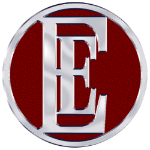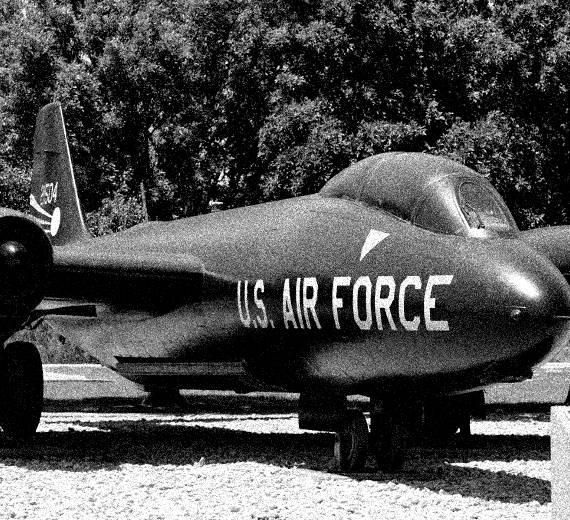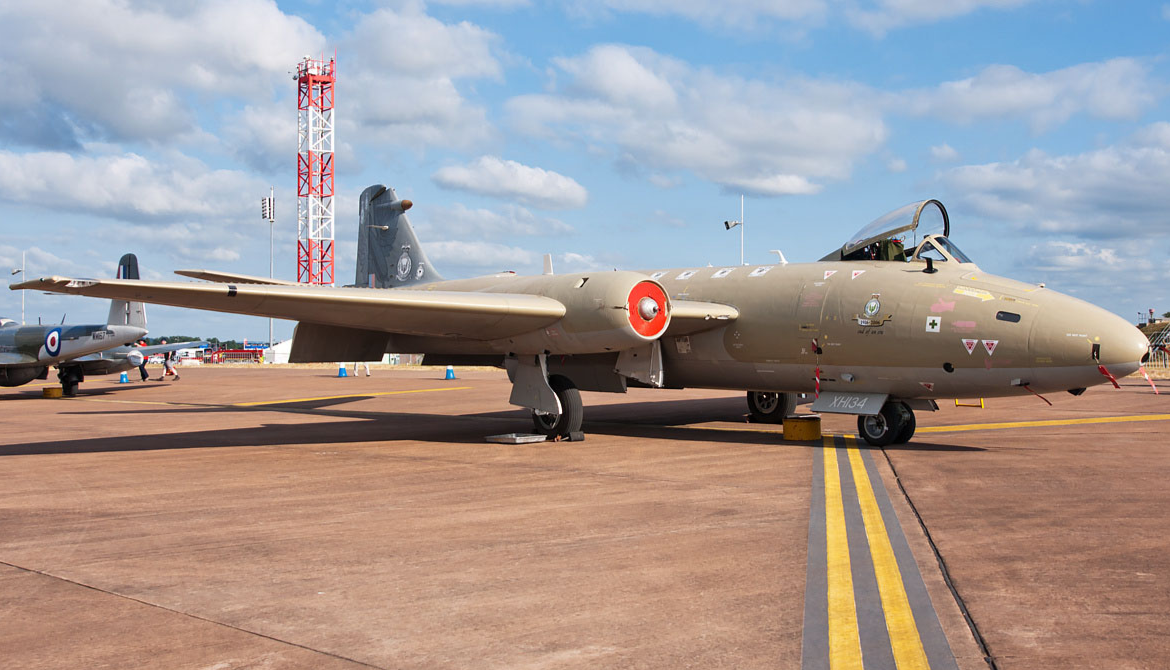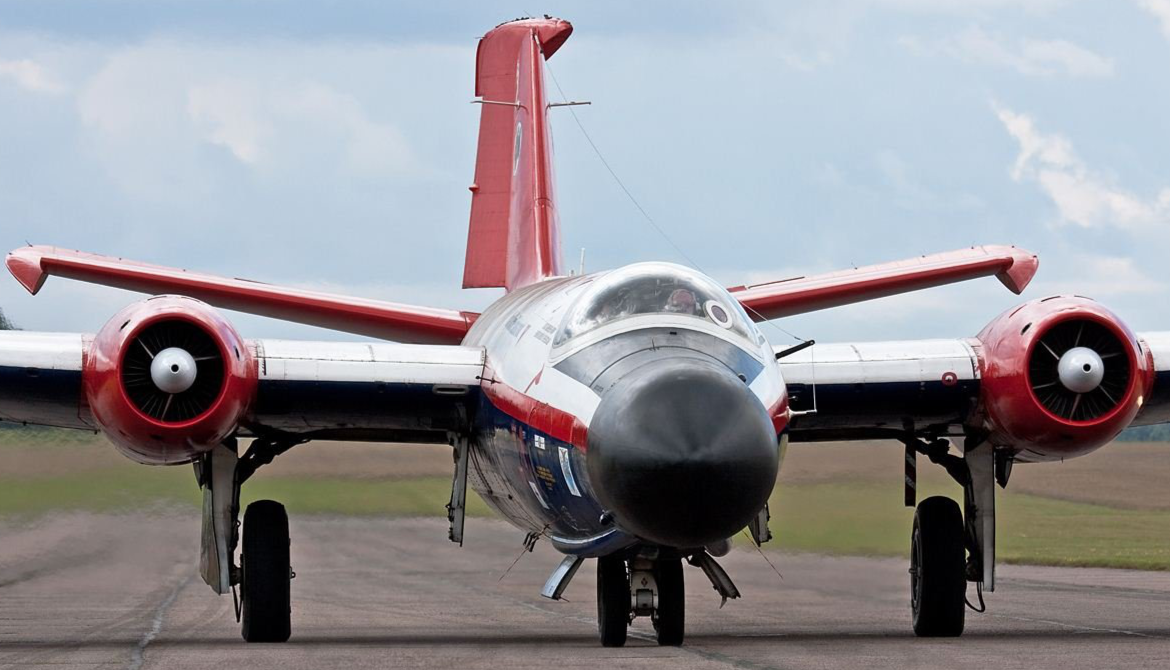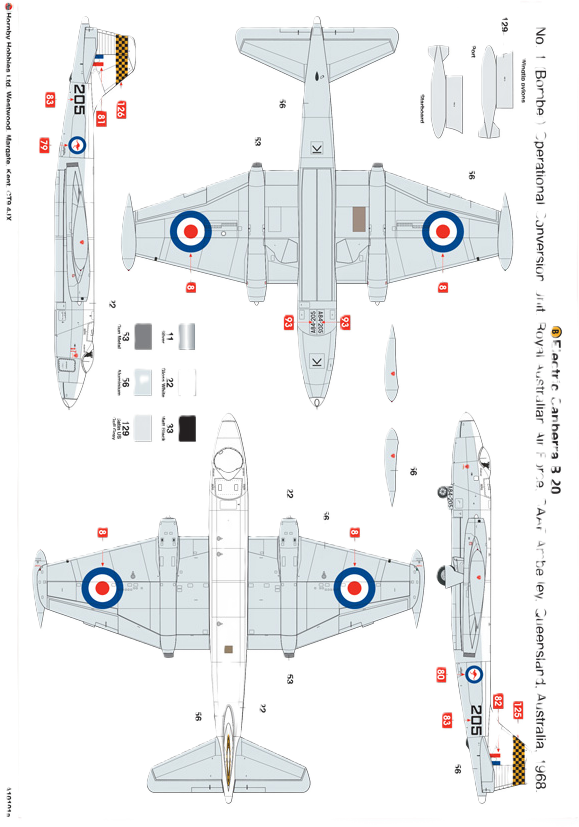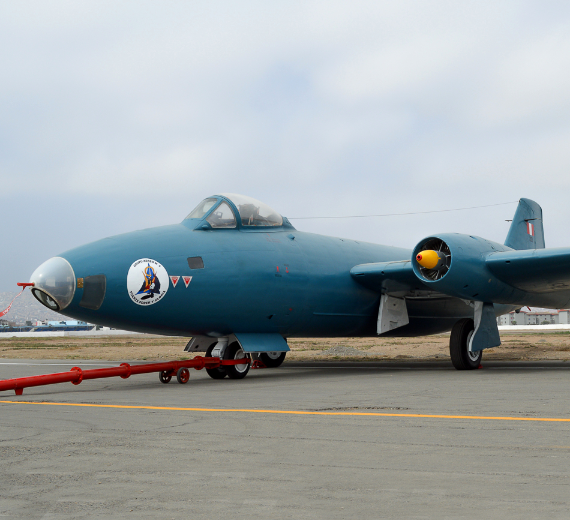English Electric
Canberra PR.9 / Martin B-57
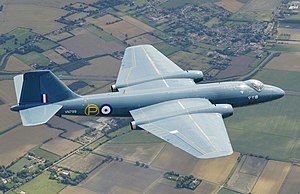 |
|
| Canberra T.4 WJ874 in 2005. It had been painted in 1999 to represent the first prototype VN799, first flown in 1949. | |
| Role | Bomber/Reconnaissance |
|---|---|
| National origin | United Kingdom |
| Manufacturer | English Electric |
| First flight | 13 May 1949 |
| Introduction | 25 May 1951 |
| Retired | 23 June 2006 (RAF), 11 May 2007 (IAF) |
| Status | Retired from service |
| Primary users | Royal Air Force |
| Number built |
|
| Developed into | Martin B-57 Canberra |
.
History English Electric Company Limited (EE)
English Electric Canberra Pr.9 / B-57
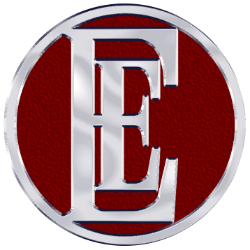
The English Electric Canberra is a British first-generation, jet-powered medium bomber. It was developed by English Electric during the mid- to late 1940s in response to a 1944 Air Ministry requirement for a successor to the wartime de Havilland Mosquito fast bomber. Among the performance requirements for the type was an outstanding high-altitude bombing capability and high speed. These were partly accomplished by making use of newly developed jet-propulsion technology. When the Canberra was introduced to service with the Royal Air Force (RAF), the type's first operator, in May 1951, it became the service's first jet-powered bomber
The Canberra could deploy many conventional weapons; typical weapons used were 250-pound, 500-pound, and 1000-pound bombs, the total bomb load could weigh up to 10,000 lb (4,500 kg).
Two bomb-bays are housed within the fuselage, normally enclosed by conventional clam-shell doors; a rotating door was substituted for these on the Martin-built B-57 Canberras. Additional stores of up to 2,000 pounds (900 kg) could be carried upon underwing pylons.
Design

0
KmCeiling
0
KmCombat RANGE
0
Km/hAircraft Speed
0
Max Crew
Photo Gallery
English Electric
English Electric Canberra Pr.9 / B-57


English Electric
Canberra Pr.9 / B-57
General Info
-
-
-
- Crew: 3
- Length: 65 ft 6 in (19.96 m)
- Wingspan: 64 ft 0 in (19.51 m)
- Height: 15 ft 8 in (4.78 m)
- Wing area: 960 sq ft (89 m2)
-
-
Powerplant
-
-
- Empty weight: (9,820 kg)
- Gross weight: (20,865 kg)
- Max takeoff weight: (24,948 kg)
- Powerplant: 2 × Rolls-Royce R.A.7 Avon Mk.109 turbojet engines, 7,400 lbf (33 kN) thrust each
-
Performance
-
- Maximum speed: 580 mph (930 km/h, 500 kn) at (12,000 m)
- Maximum speed: Mach 0.88
- Combat range: 810 mi (1,300 km,
- Ferry range: 3,380 mi (5,440 km,
- Service ceiling: (15,000 m)
- Rate of climb: (17 m/s)
Armament
-
-
- Guns: 4 × 20 mm Hispano Mk.V cannon mounted in rear bomb bay (500 rounds/gun), or 2 × 0.30 in (7.62 mm) machine gun pods
- Rockets: 2 × unguided rocket pods with 37 2-inch (51 mm) rockets, or 2 × Matra rocket pods with 18 SNEB 68 mm rockets each
- Missiles: A variety of missiles can be carried according to mission requirements, e.g: 2 × AS-30L air-to-surface missiles
- Bombs: Total of 8,000 lb (3,628 kg) of payload
-
.
Links to Youtube & Others
Another external issue that affected development was the failure of the Telecommunications Research Establishment to produce the radar bombing system for the aircraft in a timely fashion.
English Electric
English Canberra Pr.9 / B-57
The English Electric Canberra is a bomber aircraft powered by two jet engines,
Youtube Link
Upon entering service on 25 May 1951, the English Electric Canberra became the Royal Air Force's first jet-powered bomber. Essentially, the English Electric Canberra is an all-metal, semi-monocoque construction
